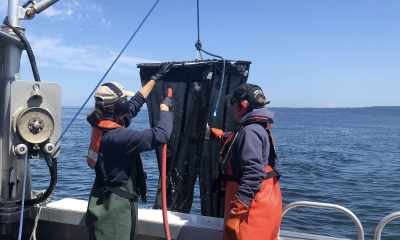Zooplankton
Zooplankton, tiny marine crustaceans, are a critical link between primary producers, or plants and algae that trap energy from the sun, and larger species like fish, mammals and birds. Many of the most important species in Puget Sound rely upon zooplankton, including salmon, forage fish like herring, surf perch, and sand lance, hake, Pollock, and shrimp. Each Puget Sound basin has its own unique zooplankton and bacteria community. Copepods are typically the most dominant zooplankton type in Puget Sound.
OVERVIEW
The ups and downs of zooplankton in Puget Sound
Zooplankton are critical to the marine food web, but until recently there have been few surveys of the zooplankton community in Puget Sound. Ongoing monitoring is now revealing a system full of complexity and surprises. The following article was commissioned by the Habitat Strategic Initiative Lead (HSIL), a cross-agency team co-led by the Washington Departments of Fish and Wildlife and Natural Resources.
RELATED ARTICLES
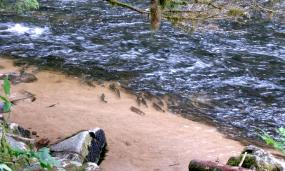
Surging numbers of pink salmon raise ecological concerns
An estimated 70% of all the salmon in the North Pacific are pink salmon. Scientists say the extreme abundance of pinks could be causing a "trophic cascade" that is harming species across the food web.
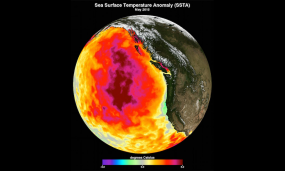
Model of heat wave 'blob' shows unexpected effects in the Salish Sea
The marine heat wave that struck the Pacific Ocean in late 2013 also caused large changes in temperature in the Salish Sea, but scientists are still puzzling over the impacts of those changes on Puget Sound's food web. The so-called "blob" of warmer than average water was thought to have increased the production of plankton, which potentially benefits creatures like herring and salmon that feed on the tiny organisms. A new paper in the journal Frontiers in Marine Science calls that interpretation into question, pointing to a computer model that links the cause to higher-than-normal river flows in the region.
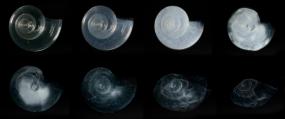
Rate of ocean acidification may accelerate, scientists warn
Last summer, scientists met at the University of Washington to address alarming findings concerning the rapid acidification of the world's oceans. Experts at that symposium warned that wildlife in the Salish Sea, from salmon to shellfish, may start to see significant effects from changing water chemistry within the next 10 to 20 years. This article summarizes the symposium's key findings and was commissioned and edited by the Washington Ocean Acidification Center which hosted the gathering. Funds for the article were provided by the Washington state legislature. [A version of this article was originally published by the Washington Ocean Acidification Center.]
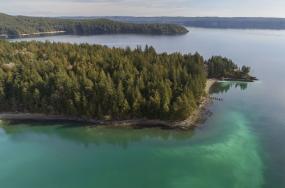
The herring defenders
Each winter and spring, researchers survey the sometimes spectacular spawning events of Puget Sound's Pacific herring. They have found wide swings in the fish's population and an overall decline in herring numbers since the 1970s, but little is known about the cause or what this might mean for the health of the food web. We spent a day with a biologist spotting herring eggs and considering the future of one of our region's most ecologically and culturally important fish species.

The pelagic (open water) food web
The marine habitat of Puget Sound can be divided up into nearshore, benthic (associated with the sea floor), and pelagic (open water) habitats. This article focuses on the pelagic habitat within the Puget Sound. This article was prepared as part of the 2015 Puget Sound Fact Book produced by the University of Washington Puget Sound Institute.

Invasive stowaways threaten Puget Sound ecosystem
Gaps in regulations could allow invasive species to hitch a ride on ships and boats. We report on some of the potential impacts, and how state and federal agencies are trying to solve the problem.
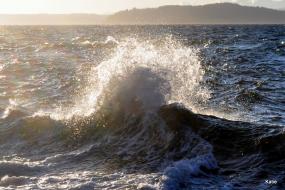
Climate and ocean processes
This overview discusses the processes that control ocean and climate characteristics. Topics include atmospheric forcing, precipitation patterns, oscillation trends, coastal upwelling, and climate change.
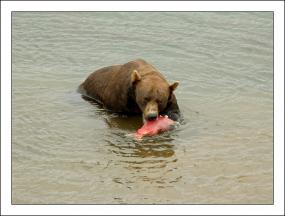
Food webs
The health of an ecosystem is tied closely to the health of its food webs. This article provides an overview of the concept, origin, and characteristics of a food web and how predator and prey relationships are shaped in the Salish Sea.
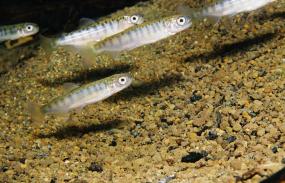
What is killing young salmon in Puget Sound?
Scientists say Puget Sound’s salmon are dying young and point to low growth rates in the marine environment as a possible cause. In part one of this two-part series, scientists consider threats facing young salmon in the open waters of Puget Sound.

